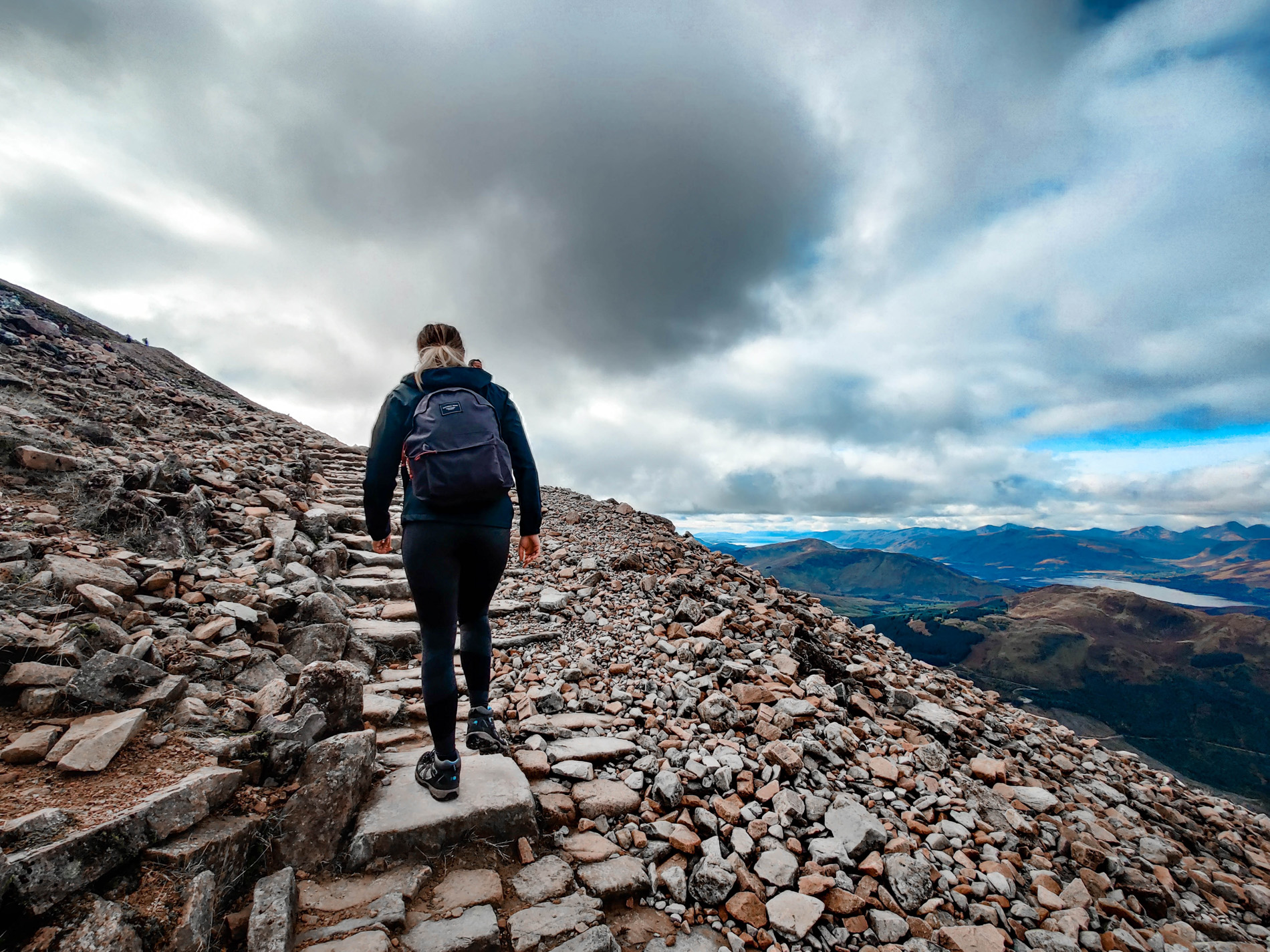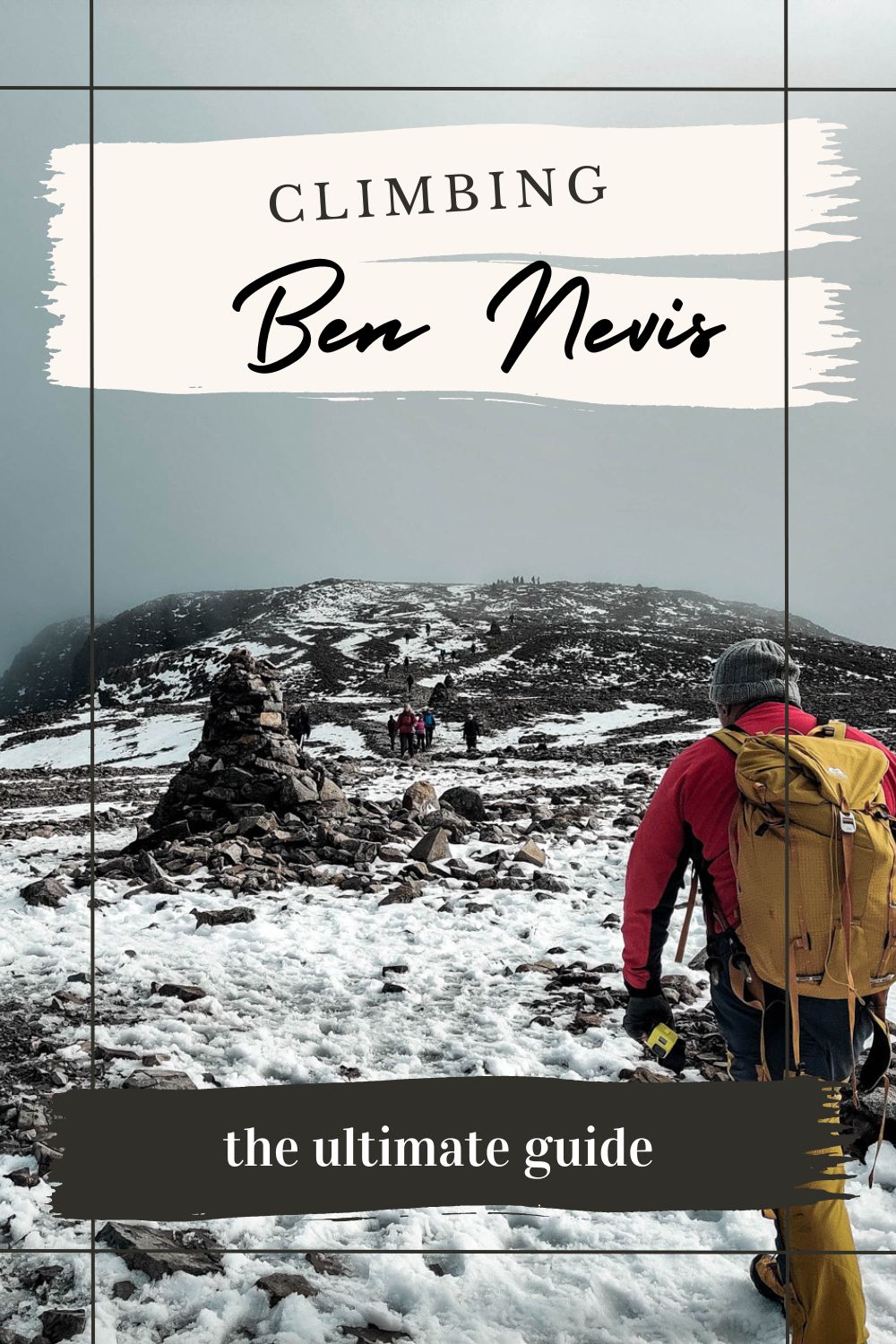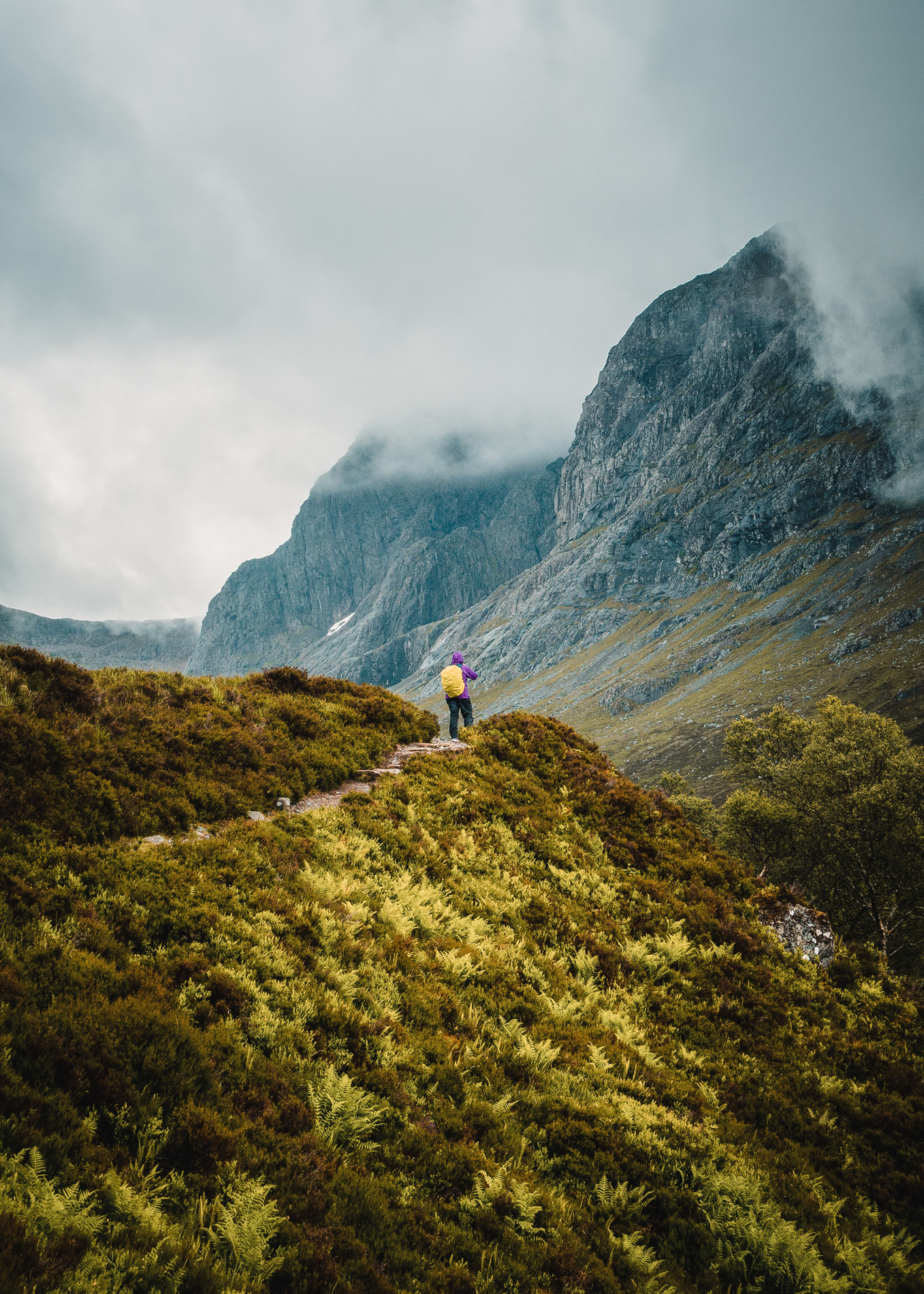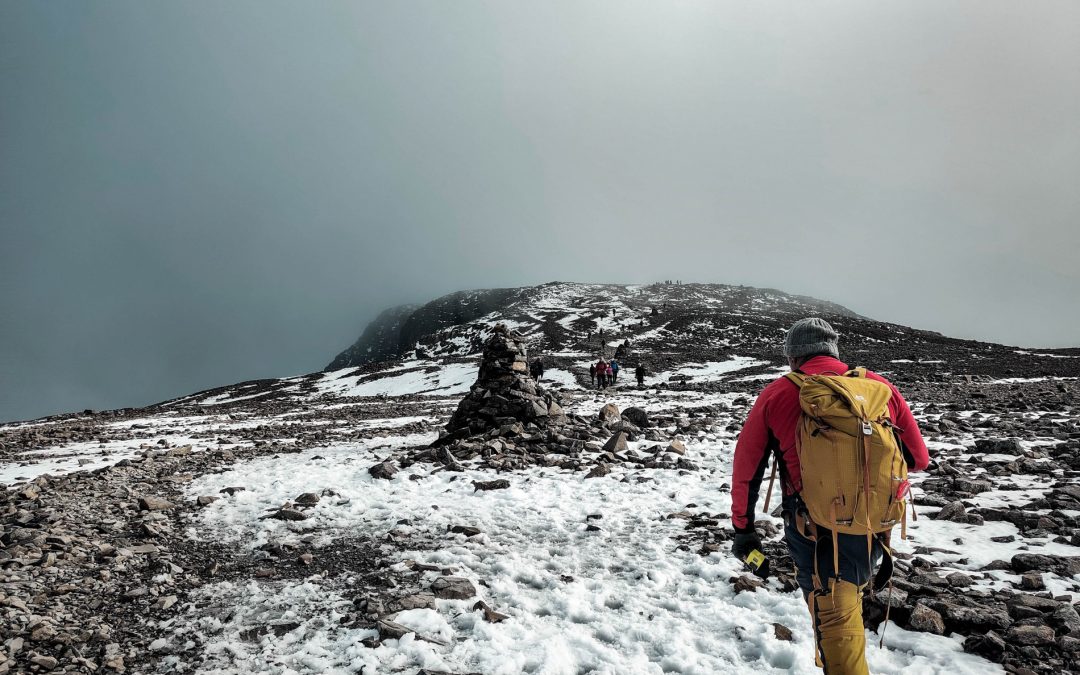Climbing Ben Nevis: an essential stop on your Scotland road trip

Preparing for the Climb
Equipment
Make sure you have the right equipment for the climb. You’ll need hiking boots, a waterproof jacket, crampons, a compass, and a map. You should also consider bringing a GPS device to help you navigate. It’s important to have a first aid kit in case of any injuries.
Fitness
Climbing Ben Nevis is a challenging activity that requires a good level of fitness. We recommend that you start training at least a few months before the climb. You can start by doing some cardio exercises like running or cycling. You should also do some strength training exercises like squats and lunges to build your leg muscles.
Clothing
Food and Snacks
In conclusion, preparing for the climb is essential to ensure a safe and enjoyable experience. Make sure you have the right equipment, are physically fit, dress appropriately, and bring enough food and water. With the right preparation, you can conquer Ben Nevis and enjoy the stunning views from the summit.

Climbing Ben Nevis: How to Get There and Where to Stay
When it comes to climbing Ben Nevis, getting there and finding a place to stay is crucial. Here’s what we found out:
By Car
Driving to Ben Nevis is a popular option, and Fort William is the nearest town with a range of facilities, including petrol stations, shops, restaurants, and pubs. If you’re driving to Fort William, you can park your car at the Ben Nevis Visitor Centre car park, which is the starting point for the Mountain Track (also known as the Tourist Route).
By Train
Taking the Caledonian Sleeper train to Fort William is a great option if you want to avoid driving. The train journey is comfortable, and you can arrive in Fort William early in the morning, ready to start your climb. From Fort William train station, you can take a taxi or bus to the Ben Nevis Visitor Centre car park.
Hotels and Hostels
Campsites
If you prefer camping, there are several campsites to choose from in the area. One of the best is the Glen Nevis Caravan & Camping Park, which is located close to the Mountain Track. It offers plenty of space for tents, caravans, and motorhomes, as well as facilities such as a restaurant and bar.
Overall, there are plenty of options for getting to Ben Nevis and finding a place to stay. Whether you’re driving, taking the train, staying in a hotel or hostel, or camping, you’ll find something to suit your needs. Just remember to book in advance, especially during peak season, to avoid disappointment.
Climbing Ben Nevis: Choosing a Route
When it comes to climbing Ben Nevis, there are several routes to choose from. Each route has its own unique challenges and rewards, so it’s important to choose the one that’s right for you. In this section, we’ll take a look at some of the most popular routes up Ben Nevis.
Tourist Route
The Tourist Route is the most popular and well-trodden path up Ben Nevis. It’s a great option for beginners or those who are less experienced in mountain climbing. The path is well-maintained and easy to follow, and there are plenty of other hikers around to offer support and encouragement. However, it can get quite busy during peak season, so be prepared to share the path with others.
Ledge Route
The Ledge Route is a more challenging option that takes you up the north face of Ben Nevis. It’s a great choice for those who want a bit more of a challenge and are comfortable with rock climbing and scrambling. The route is less well-trodden than the Tourist Route, so you’ll need to be comfortable with route-finding and navigating. However, the views from the top are truly breathtaking.
CMD Arete
The CMD Arete is another challenging route that takes you up the north face of Ben Nevis. It’s a great option for those who are comfortable with rock climbing and scrambling and want a more adventurous climb. The route offers stunning views of the Scottish Highlands, but it’s important to note that it can be dangerous in winter conditions.
Carn Mor Dearg Arete
The Carn Mor Dearg Arete is a challenging and exposed route that takes you up the ridge of Carn Mor Dearg before joining the Tourist Route to the summit of Ben Nevis. It’s a great option for experienced climbers who want a bit of a challenge and are comfortable with exposure. However, it’s important to note that the route can be dangerous in winter conditions.
Mountain Track
The Mountain Track is the official name for the Tourist Route up Ben Nevis. It’s a well-maintained path that takes you up the south side of the mountain. It’s a great option for beginners or those who are less experienced in mountain climbing. However, it’s important to note that the path can be treacherous in winter conditions, so be sure to check the forecasts and route maps before setting out.
No matter which route you choose, it’s important to be prepared for the conditions you may encounter. The Scottish Highlands can be unpredictable, and the weather can change quickly. Be sure to bring appropriate clothing and equipment, and always be aware of the risks involved in climbing Ben Nevis. If you do get into trouble, the mountain rescue team is always on hand to help. So, take your time, enjoy the climb, and stay safe!
The Descent
After reaching the summit of Ben Nevis, you’ll probably feel thrilled to have completed such a challenging climb. However, the descent is just as important, if not more so, than the ascent. Here are some things to bear in mind as you prepare to make your way back to sea level:
- Take your time: The descent can be just as treacherous as the ascent, so it’s important to take your time and not rush. Take breaks to stretch your legs every so often, and, above all, don’t be tempted to rush.
- Watch your footing: The descent can be steep and slippery, especially if it’s been raining or snowing. Most accidents on the mountain happen on the way down, rather than the way up, so take special care here.
- Follow the path: It may seem obvious, but you’d be surprised how many climbers stray from the path – either on purpose, or as a result of becoming disoriented, especially in areas where the path was less defined.
- Use your walking poles: We found that using walking poles helped us maintain our balance and reduce the impact on our knees and ankles. They also came in handy when navigating rocky or uneven terrain.
- Stay hydrated and fuelled: It’s easy to forget about drinking water and eating food during the descent, but it’s important to stay hydrated and fuelled. We made sure to carry plenty of water and snacks to keep us going.
Overall, the descent can be just as challenging as the ascent, but with some careful planning and preparation, it can be a rewarding and enjoyable part of the climb.

Frequently Asked Questions About Climbing Ben Nevis:
Here are some frequently asked questions about climbing Ben Nevis:
-
What is the best time of year to climb Ben Nevis?
- The best time to climb Ben Nevis is during the summer months from May to September when the weather is generally more stable. However, it is important to remember that weather conditions can change quickly on the mountain.
-
How long does it take to climb Ben Nevis?
- It takes around 7-9 hours to complete the full ascent and descent of Ben Nevis via the Mountain Track. The time it takes can vary depending on individual fitness levels and weather conditions.
-
What is the Mountain Track?
- The Mountain Track, also known as the Pony Track, is the most popular route to the summit of Ben Nevis. It is a well-maintained trail that is suitable for most walkers, although it can be steep and strenuous in places.
-
Do I need any special equipment for climbing Ben Nevis?
- Although the Mountain Track is a relatively straightforward route, it is still important to be properly equipped for the climb. This includes sturdy walking boots, warm and waterproof clothing, a map and compass, and plenty of food and water. In winter conditions, crampons and an ice axe may also be necessary.
-
Is it safe to climb Ben Nevis alone?
- While it is possible to climb Ben Nevis alone, it is generally safer to climb with at least one other person. This is especially important in winter conditions when the risk of avalanches and other hazards is higher. It is also recommended to let someone know your planned route and expected return time.
-
Are there any alternative routes to the summit of Ben Nevis?
- Yes, there are several alternative routes to the summit of Ben Nevis, including the Carn Mor Dearg Arete, the Ledge Route, and the Tower Ridge. These routes are more challenging and require more experience and technical skills.
-
Are there any dangers or hazards I should be aware of when climbing Ben Nevis?
- Yes, there are several hazards on Ben Nevis, including steep drops, loose rocks, sudden changes in weather conditions, and snow and ice in winter. It is important to be aware of these hazards and to take appropriate precautions, including staying on the trail and being properly equipped.
-
Is it possible to camp on Ben Nevis?
- Camping is not permitted on the summit of Ben Nevis, but there are several campsites in the surrounding area. However, it is important to check with local authorities for any restrictions or regulations before camping.
-
Can I bring my dog with me when climbing Ben Nevis?
- Yes, dogs are allowed on the Mountain Track, but they must be kept on a lead at all times and owners are responsible for cleaning up after them. It is important to ensure that your dog is properly equipped for the climb, including suitable boots and a coat if necessary.
-
What should I do if I get lost or injured on Ben Nevis?
- If you become lost or injured on Ben Nevis, the first thing to do is to try to stay calm and assess your situation. If possible, use a map and compass to find your way back to the trail. If you are injured or unable to move, stay where you are and try to signal for help using a whistle or other means. If you have a mobile phone, try calling for help, but be aware that reception can be limited in some areas.


